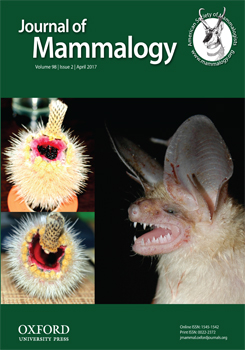Mark–recapture models and a sample of 607 Steller sea lion (SSL, Eumetopias jubatus) pups born to individually marked, known-aged females were used to estimate pup survival probabilities from birth to approximately 2 months of age over 8 years (2007–2014) at the Forrester Island complex, the largest rookery in Alaska. Survival of pups was lowest (0.846/week) early in the season when pupping areas were less dense than after the time of maximum counts of adults (≥ 18 June, 0.972/week). Survival was lowest in the first 2 weeks of life and then consistently high after 2 weeks of age. After including age effects, survival was lowest for pups born < 9 June and for pups of 5–7-year-old mothers than 8–20-year-old mothers. Compared to average survival over 6 other years, pup survival to 3 weeks of age was ∼20% lower in 2010, due to a prolonged storm during the middle of the active pupping period, and in 2013, for unknown reasons but not storm-related. Average survival to 3 weeks of age was 0.79, suggesting neonatal mortality was significant and likely important to population dynamics at this stable rookery and in shaping reproductive strategies of females. To prevent disturbance of very young pups and their mothers, SSL pups are first marked for long-term mark–recapture studies at approximately 3 weeks of age throughout their range. When the high neonatal mortality rate observed in this study was ignored, the positively biased model-based population trend estimate (2.3%/year) was triple the estimate produced when the 1st-year survival estimate included neonatal mortality (0.7%/year).
How to translate text using browser tools
19 December 2016
Survival of Steller sea lion (Eumetopias jubatus) pups during the first months of life at the Forrester Island complex, Alaska
Kelly K. Hastings
ACCESS THE FULL ARTICLE

Journal of Mammalogy
Vol. 98 • No. 2
April 2017
Vol. 98 • No. 2
April 2017




